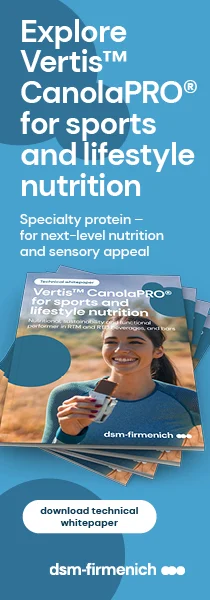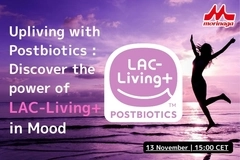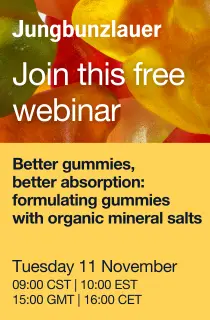Nestlé gives gradual rollout of Nutri-Score in continental Europe the green light
The food and beverage giant plans to introduce the “traffic light” color-coded nutritional ranking system in France, Belgium and Switzerland
26 Jun 2019 --- Nestlé has announced its support for Nutri-Score as the chosen labeling system for food products and beverages in continental Europe. The Nutri-Score is a voluntary system on the front of packaging that classifies the nutritional value of food products and drinks according to the nutritional profile. The “traffic light” color-coded system presents an easy-to-read scale from A (healthier choices) to E (less healthy choices). This move reflects Nestlé's ambition to encourage healthier and more informed consumer choices in support of European and local public health agendas.
Nestlé is looking to roll out the Nutri-Score on a large scale, starting in countries that already support the system. Constructive engagement continues in other European countries to ensure the best possible outcome for all Europeans. Nestlé will provide an update on the implementation of the system later in 2019.
In March 2017, Nestlé pledged its full support for the development of a general European labeling system with color codes on the front of the packaging. The company has worked with the industry, public authorities and other partners to investigate various options. Public health organizations in France, Belgium and Switzerland then recommended the use of Nutri-Score. A number of other countries have indicated that they intend to follow. Nestlé believes it is time to act quickly and decisively to develop a wider momentum for the Nutri-Score throughout continental Europe.

 Shifting to a unified nutrition labeling system that is as simple as possible may bear the best results for consumer health. Shifting to a unified nutrition labeling system that is as simple as possible may bear the best results for consumer health. This is according to a European Consumer Organization (BEUC) executive, Pauline Constant, who spoke to NutritionInsight days after seven national consumer organizations from the BEUC network launched a petition calling for the rollout of Nutri-Score nutrition labeling across Europe on food and drink packaging.
Shifting to a unified nutrition labeling system that is as simple as possible may bear the best results for consumer health. Shifting to a unified nutrition labeling system that is as simple as possible may bear the best results for consumer health. This is according to a European Consumer Organization (BEUC) executive, Pauline Constant, who spoke to NutritionInsight days after seven national consumer organizations from the BEUC network launched a petition calling for the rollout of Nutri-Score nutrition labeling across Europe on food and drink packaging.
“Our support for the Nutri-Score reflects our commitment to good nutrition and conscious choices,” says Marco Settembri, CEO of Nestlé for Europe, the Middle East and North Africa. “It is also a matter of transparency. Europeans increasingly want to know what is in the food and drinks they consume. We want to offer them easily understandable nutritional information as quickly as possible. Scientific evidence and increasing consumer support show that the Nutri-Score is a solution that works in continental Europe.”
In addition to providing transparent nutritional information, Nestlé has also promised to improve the nutritional value of its food and beverages. The global company has expressed several commitments to reformulate products, such as further reducing sugars by 5 percent, sodium by 10 percent and saturated fats by 10 percent in its products by 2020. As part of the "Nestlé for Healthier Kids" initiative, it has also committed to launching nutritious products for children and families. This includes offering a wider range of organic and natural options and increasing the use of vegetables, vegetable proteins and whole grains as ingredients.
“We have been improving the nutritional composition of our products for almost 20 years now,” says Marco Settembri. “We are reducing sugars, sodium and saturated fats and creating more nutritious options. In 2018, we launched 750 healthier products for children and families in Europe, the Middle East and North Africa. We want to make it easier for families to opt for healthier options.”
Is nutritional labeling lacking uniformity?
In the EU, Spain, France, Belgium and some parts of Germany currently use the labeling system voluntarily. The global diversity in nutrition label use is clear, however. In Europe, color-coded schemes may come under consideration in Portugal, Poland and Ireland, while Germany plans to develop an understandable and comparable Front of Pack (FOP) label, but has not elaborated on the format.
“We know obesity rates continue to rise, and that part of the solution is to make it easier for consumers to make sense of nutritional information on food labels. We need strong political will to make it a reality so that consumers across Europe can choose healthier foods more easily,” says Monique Goyens, Director General of BEUC.
“A color-coded label on the front of pack helps busy shoppers compare foodstuffs and to spot the healthier yogurt or snack instantly. Being a consumer should not be a full-time job. Few of us have the time to decipher complex figures on the back of packages at the supermarket,” she adds.
Indeed, simplicity may well be essential when it comes to communicating the nutritional levels of products to busy consumers. Findings from a 4-year EU-funded research project, CLYMBOL – Role of Health-related Claims and Symbols in Consumer Behavior – found that health and nutrition messaging on packaging should be as simple as possible, as well as scientifically substantiated.
Additionally, last year, the European Food Information Council’s (EUFIC) 2018 edition of the Global Update on Nutrition Labeling similarly noted that appropriate and meaningful nutritional information should be based on science and take into account consumer use, interpretation and understanding of different labeling schemes.
By Benjamin Ferrer
















